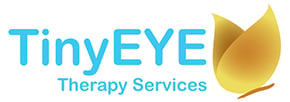Every child is an artist. The problem is how to remain an artist once he grows up.
~ Pablo Picasso (1881 - 1973)

Hello Everyone,
It was bound to happen. I was bound to have marker scribbles knee-height on the wall. Today I found out that my growing 21 month old son is capable of opening up the pen drawer and pulling out whatever his little hand can reach. In a very short moment of complete silence, my ears perked up and led me to a jaw dropping sight. My angel boy was standing tummy to tummy with the wall, drool dropping over his wet chin, and a black marker gripped in his chubby little hand...waves and stripes of black ink spotting up his canvas...my wall.
How to react? 3 Choices:
1. Scream "NOOOOO!" then yank away the marker and frantically try to scrub away any proof of his touch
2. Say "no-no" then yank away the marker and frantically try to scrub away and proof of his touch
While contemplating my choices, Aiden looked up at me and smiled so proudly. Then he looked at the wall and started his mix-match of words "mama daddy ba uh" (which could translate to many things, such as a car ride or bath time or something about his sister or putting on his boots). Wow - he was telling me a story - his story.
3. Get down on my knees to share his story from his point of view
I chose number three. I nearly cried - Aiden had a story to tell me. I had a sacred invitation to his world. We chatted about the ‘art' for at least 25 seconds. Later that night, I took a photograph of his story. Reluctantly, I scrubbed away all proof of his touch and turned the wall back into a silenced space. Note to self: create a story-maker corner full of markers and paper rolled out on the wall. A place where stories can live.
The following information discusses ideas for promoting writing for preschool children.
Prerequisites to Writing
Young children require thousands of opportunities to interact with others and their world, listen to stories, draw about stories and experiences, and play out stories and experiences. The language skills they acquire through this early literacy exposure will help them to understand language, express themselves, read, and write.
Before children write stories, they use language to tell stories to accompany their drawings. Later they discover that they can use print to draw speech, that print represents speech sounds and that these symbols have meaning.
In addition to requiring language skills to write, children need fine motor skills, or the ability to manipulate their hands to make precise movements. Like other areas of development, physical writing skills develop on a continuum, one step at a time.
Stages of Scribbling and Writing:
• Random scribbling for pleasure
• Scribbling with the understanding that symbols can covey meaning
• Creating mock messages, in which mock letters and beginning letter forms appear
• Writing alphabet letters
• Writing with invented spelling, starting with just the first letter of words, then the first and last letters
• Consonants typically emerge before vowels
Tips for Supporting Writing Development
It is essential for children to have access to age-appropriate writing accessories and opportunities to have fun with them.
1. Finger Exercise
- Writing requires coordination and stability. Children can prepare their hands and fingers for writing by playing with objects that help to develop these traits.
- Picking up objects, especially small objects such as raisons, cheerios, and beads
- Stringing objects, such as cheerios or beads, to make a chain or necklace
- Putting together puzzles
- Pushing buttons on a phone, computer, or piano
- Experience with using hands and fingers to create
- Play-doh
- Finger painting
- Crafts
- Drawing, colouring, scribbling...
2. Access to Accessories
- Provide a variety of writing materials (markers, pencils, colored pencils, crayons, stamps) and a variety of shapes, sizes and colors of paper for writing. Store them in attractive containers that are easy for the children to use.
- Clipboards with pencils attached to the boards with string or yarn are also great writing props for children to use in all areas of the room.
- Do not expect children to write between lines! They need the free form to develop their fine motor skills. Accept all attempts at writing as real writing.
3. Role Model
- Write with the children in meaningful ways. For example, in the pretend area, make grocery lists or menus together. In the block area, make signs that have directions on them, make road maps for the cars and add houses, community buildings, etc and write the names on them. Use large sheets of paper for this.
- Model writing with the children. When talking together, write down their ideas. The children will not be able to "read" what you write, but they will know that the print represents their idea.
- Preview and Review: Make lists of what you expect to see on a field trip or in a book and then revisit that list afterwards to see if you saw the same things on the list.
- Write stories together. Enjoy reading the story again and again.
- Offer to write down their feelings if they are angry or sad or happy, or to record a conflict. Not only do they feel "heard", but they learn a valuable tool for expressing themselves in a constructive way.
4. Drawing Stories
- Encourage the children to draw pictures. Provide little blank books from scrap paper in the writing area, so that they can draw their pictures in the book.
- Use drawing to develop language and literacy skills.
-Step One: Read a story or discuss a recent experience.
-Step Two: Ask the children to draw a picture about step one.
- Alternatively, they could draw a picture about more than on part of the story, then create a mini book that encourages them to talk about the beginning, middle, and end of a story.
-Step Three: Ask them to "write" (scribble, etc) their story on the page.
Model what you want them to do, even if it means drawing your own picture and scribbling some lines on it to tell your story.
-Step Four: Ask them to "read" you their story about the picture.
-Step Five: Ask them if they want you to write their words on the page, too (so you and others can more accurately "read" their story again and again).
Writing for a Purpose
- Encourage writing for real purposes by providing centres such as a post office, restaurant, or office.
- Writing their names: When starting to write conventionally, children usually begin to write their own name first. Provide name cards and lists of children names in several areas of the room. Examples should have a capital letter for the first letter and lower-case letters for the rest of the name.
This link has a tremendous amount of resources about the power of drawing to literacy development: http://drawingwriting.com/
If a school district in your area needs Speech-Language Pathologists, please let me know by email as we at TinyEYE can help!


Marnee Brick, MSc
Speech-Language Pathologist and Director of Speech Therapy
TinyEYE Therapy Services (Speech Therapy Telepractice)
http://www.TinyEYE.com-Online Speech Therapy Telepractice
School Districts: Recruiting Speech-Language Pathologists? Job Boards not working? Click this link!


